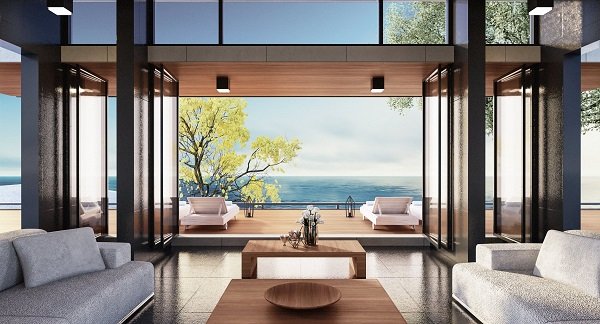The biggest nation in South America, Brazil occupies approximately half the continent. Nearly all of it is in the Southern Hemisphere, and much of it is tropical, with large tracts of rainforest rich with exotic flora and creatures.
Know About the Brazil
Brazil’s 7,400-kilometer Atlantic coast is studded with golden-sand beaches, and its interior is loaded with natural resources. Gold from Brazil’s mines still lines the cathedrals of Portugal, the colonial nation that controlled Brazil until 1822. This significant Portuguese influence is obvious in Brazil’s colonial architecture, decorative arts such as the glazed tiles in its churches and convents, and the language.

For travellers, Brazil is both a tropical paradise and an intriguing cultural destination with attractions for all tastes, from peaceful beach vacations and rainforest adventures to world-class art museums and the throbbing rhythms of Rio’s Carnival.
-
Cristo Redentor and Corcovado, Rio de Janeiro
On top of Corcovado, Rio de Janeiro’s most famous landmark, the 28-meter-tall Art Deco statue of Christ, known as Cristo Redentor (Christ the Redeemer), looks out over the city and the sea.
The Tijuca National Park includes the 709-meter-tall mountain where the monument sits, and a 3.5-kilometre-long rack train takes visitors to the summit. Polish-French artist Paul Landowski and Brazilian engineer Heitor da Silva Costa collaborated on the 30-meter monument completed in 1931.
-
Iguaçu Falls
The Iguaçu River descends magnificently in a semicircle of 247 waterfalls that crash into the ravine below at the spot where Brazil, Paraguay, and Argentina meet. The river narrows to a quarter of its normal width just before the falls, making the water even more powerful.
You have the widest view of the falls from the Brazilian side, which are more than 100 metres high and spread out over a large area. One bridge stretches to the Garganta do Diabo, one of the world’s greatest waterfalls.
The pre-Lenten Carnaval (Carnival) spectacular in Rio de Janeiro is unparalleled in colour, music, movement, and euphoria. No, this isn’t another street party, but an elaborately orchestrated extravaganza in which fans can see dozens of competitors perform in an Olympic-sized stadium created by none other than one of Brazil’s greatest architects, Oscar Niemeyer.
The Sambódromo is a 700-meter parade route that features dancers and musicians from the rival samba schools strutting their stuff in a stunning explosion of colourful costumes.
-
Amazon Rain Forests
Approximately 20 kilometres south of Manaus, Rio Negro’s black waters merge with Rio Solimes’ pale muddy waters to form the Amazon, continuing as the Amazon. From Manaus, you may take a boat to Encontro das Aguas, which translates as “meeting of waters.”
It is also possible to cruise the network of rivers, canals, and lakes that the Three Rivers have created. As an archipelago located in the Rio Negro, the Anavilhanas Islands authenticates the Amazonian ecology, including lakes, streams, and flooded trees.
-
Salvador’s Pelourinho
An extraordinary collection of 17th and 18th-century colonial structures in Brazil’s old colonial capital, Cidade Alta (Upper Town), has been designated a World Heritage Site by UNESCO.
You may discover some of Salvador’s most stunning churches and monasteries in this historic area, known as the Pelourinho. This was the colony’s source of wealth, and the abundant gold was used to create religious structures.
One of the city’s most beautiful churches, So Francisco, was erected in the early 1700s and is adorned with delicate woodwork and gold. Azulejos, or Portuguese tile panels, may be seen in the choir and cloister.
-
Sugar Loaf, Rio de Janeiro
At 394 metres above sea level, Sugar Loaf is Rio de Janeiro’s most recognisable sight, towering magnificently over the city’s beaches and streets. From its summit, visitors may enjoy panoramic views of Rio and the harbour, as well as a cable car journey between Sugar Loaf and the Morro da Urca, a lesser peak that is connected to the city by another cable car.
-
Copacabana, Rio de Janeiro
Avenida Nossa Senhora de Copacabana, Rio’s most attractive and renowned street, is bounded on one side by four kilometres of white beach and crashing waves. In a nod to the city streets of Lisbon, Portugal, a wide promenade in black and white mosaic separates the beach from the surrounding structures and vehicular activity.
It’s not only for a show at the beach. The beach attracts a slew of sun worshippers, swimmers, and children constructing sandcastles at any given time of year. This is where you’ll discover a plethora of restaurants, trendy stores, and cafes, as well as gorgeous historic structures from when Rio was the country’s capital, all within easy walking distance.
-
Ipanema
Copacabana’s white sands give way to Ipanema’s, which are well-known. There are hotels, restaurants, cafes and art galleries along the promenade in Copacabana, making this an all-year-round favourite spot for tourists and locals alike.
In the distance, beyond the Jardim de Alá Canal, which drains the lagoon of Lagoa Rodrigo de Freitas, is the beach of Leblon. These beaches are popular with families since they have more residents and fewer visitors. On Sunday, there are antique markets at Praça de Quentaland and the Feira de Artesano de Ipanema, a hive of street food, music, and art.
-
Brasília’s Modernist Architecture
In 1960, Brasilia, Brazil’s new capital city, was built out of the jungle in less than three years to replace Rio de Janeiro. As a result of Lcio Costa and Oscar Niemeyer’s exquisite design, Rio de Janeiro has become one of the few cities globally that represents a single architectural idea and a full plan.
Major architectural features, which make up most of the governmental portion, are the city’s most popular tourist attractions without a regular mix of residential and commercial districts in its vicinity. Praça dos Tràs Poderes is surrounded by some of the most notable structures in Brasilia, including the Presidential Palace, the Supreme Court, and the two starkly contrasted parliamentary buildings.


![Mind-blowing & Most Visited Places in Costa Rica [2022]](https://niceworkingday.com/wp-content/uploads/2022/03/Mind-blowing-Most-Visited-Places-in-Costa-Rica-2022.jpg)
